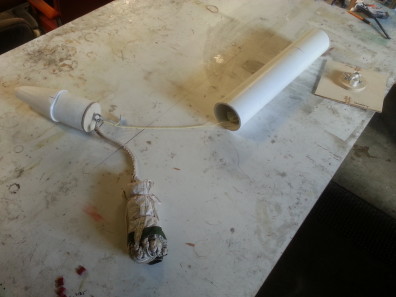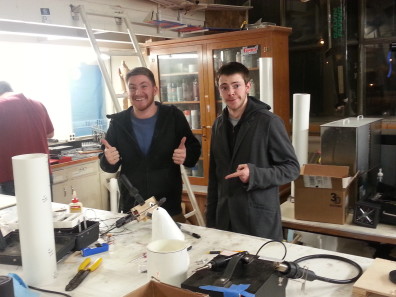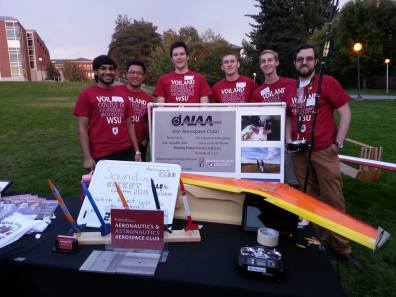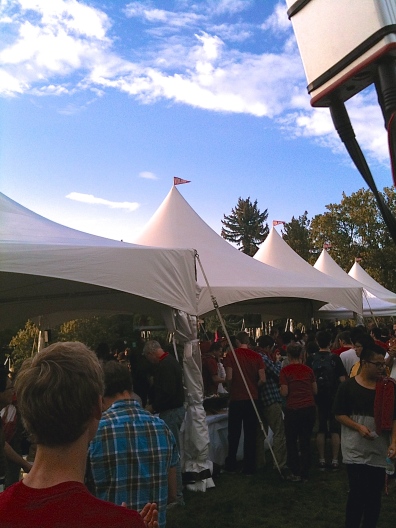Payload guy here. It’s taken till 2nd semester but we have a list of payload ideas that people find acceptable and are actively working towards.
Possible Payload List of Ideas:
- Marshmallows, see how they stand up to G-Forces; fall out map
- Determine the relationship between altitude and temperature
- Fly various consumer electronics and see how they stand up to the forces.
- Construct a simple accelerometer and record the g-forces during flight.
- Construct a simple vibration detector and record vibration during flight
- Devices to protect a raw hen’s egg from breaking under the forces of acceleration and deceleration.
- Devices to protect a hard-boiled egg, including peanut butter and a non-Newtonian fluid (cornstarch and water).
- Tubes of shaving cream, cornstarch and water, jello, and some liquids stacked by density (alcohol, water, corn syrup, baby oil, cooking oil).
- A hand-held GPS unit which will record the flight data for subsequent analysis of altitude and flight track.
The team does seem to find the more electronic ideas more exciting but since the payload will need to be 10lbs, minimum, we will need to find a way to add some weight to the payload to meet the standard.
However, I am also doing the payload module, which has been the focus of my time this week. It’s important to find a tube that is made of a material that is not so brittle, with an emphasis on ductility/bend-ability. The point being that if the tube were to break under any circumstances, I would not want to have the tube break the rocket from the inside out. I would want tube to just bend under any inconsistencies that happen to pressure the tube during the rocket trajectory. But while communications are going on, I’ll try to find some project ideas to get going underway. Till, next week.
—-Dallas Chang, Payload Lead
“If my calculations are correct, when this baby hits 88 miles per hour… you’re gonna see some serious shit.”
-Doc Brown, Back To the Future (1985)




